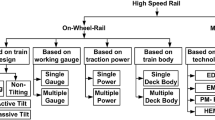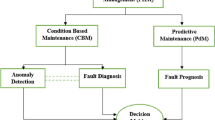Abstract
The outdoor terminal box is the basic node of the power Internet of Things as an intermediate link between outdoor electrical equipment and indoor equipment, like measurement and control, protection, communication and other equipment. Terminal boxes and terminals need to be regularly checked on site, loop tests, transformations, and equipment replacement. Operator errors have become one of the main factors in outdoor terminal box accidents. In terms of human risk assessment of outdoor terminal boxes, few papers are involved. In order to correctly evaluate the influence of human factors on the failure of outdoor terminal boxes, the paper first analyzes the human behavior factors of outdoor terminal box operators, the common performance conditions of the CREAM (Cognitive Reliability and Error Analysis Method) model is used to analyze the human behavior mechanism and behavior reliability factors during the operation of the terminal box. Then, the SLIM (Success Likelihood Index Method) model is used to calculate the probability of human error. The proportional failure model is used to calculate the failure rate of the outdoor terminal box itself. Finally, taking a circuit breaker terminal box as an example for simulation, the probability of human error is 1.56%, the equipment failure rate is 0.84%, the risk value of the system is 10.7%, and the risk level of the system is 3. From the probabilistic perspective, it shows that human factors have a greater influence on the causes of accidents.


Similar content being viewed by others
Data and Material Availability
The data and materials involved in the article are fully disclosed in the article.
Code Availability
The code involved in the article is all Matlab's own functions, which can run normally.
References
Qiangqiang, Z., & Jin, Li. (2013). Study and application of anti-condensation control system of intelligent terminal box in substation. Guangdong Electric Power, 26(08), 73–77.
Swain, A. D., Guttmann, H. E., (1983) A handbook of human reliability analysis with emphasis on nuclear power plant applications, NUREG/CR-1278[R].Washington D.C.:USNRC.
Str Eter, O. (2000) Evaluation of human reliability on the basis of operational experience[D]. Munich, Germany: GRS.
Cacciabue, P. C., Decortis, F., Drozdow-Icz, B., et al. (1992). COSIMO: A cognitive simulation model of human decision making and behavior in accident management of complex plants[J]. IEEE Transactions on Systems, Man, and Cybernetics, 22(5), 1058–1074.
Zheng, X., Li, J., Song, S., Bao, W. (2018). Improvement and application of moisture-proof measures for outdoor terminal box in converter station[J]. Electric Engineering, 15, 125–128+131.
Danyang, Z., Ang, L., & Haoyang, W. (2016). Protection measures of outdoor terminal box and its design specification. Electric Switchgear, 54(02), 7–10.
Baofeng, Li., Xipin, S., Tao, L., Guangzi, Z., & Xingyun, X. (2018). Design of a wetproof outdoor terminal box against beastie. Telecom World, 03, 214–215.
Libin, Xu., Yuan, G., & Wei, G. (2017). Design of temperature-controlling and moisture-proof device for terminal box based on WSN and semiconductor refrigeration. Electrical Engineering, 12, 46–52.
Yuanzhi, X. (2019). Plugging force and reliability of fish-eye-hole compliant pin of electrical connector. Failure Analysis and Prevention, 14(05), 289–293.
Lin, X., & Wu, Q. (2016). Review of fretting contact characteristics for coating material of common connector. Electromechanical Components, 36(06), 45–51.
Yongying, Du., Zhili, S., & Chunmei, Lv. (2015). Reliability study on terminal contact parts of electrical connector of JF series. Machinery & Electronics, 09, 11–15.
Bin, L., Yang Qin, Lu., & Mao, L. Y. (2012). Study on prediction model of human factor failure probability based on CREAM. Journal of Safety Science and Technology, 8(07), 46–50.
Jingjing, P., & Ali, Z. (2013). Research on index system for human reliability assessment of pharmaceutical company. Journal of Safety Science and Technology, 9(12), 165–170.
Reason, J. (1990). Human error. Cambridge: Cambridge University Press.
Hollnagel, E. (1998). Cognitive reliability and error analysis method: CREAM (1st ed.). Elsevier.
Vestrucci, P. (1988). The logistic model for assessing human error probabilities using the SLIM method. Reliability Engineering & System Safety, 21(3), 189–196.
Yu, H., Meng, J., Jianlian, Z., Weihan, L., & Chuangxin, G. (2019). Risk assessment of substation automation system failure considering human reliability. Power Generation Technology, 40(05), 448–454.
MaLihua, Z. N. Z., Lu, K., & Kai, X. C. (2011). Study on the maintenance strategy of power equipment based on the optimal life cycle cost. Power System Protection and Control, 39(16), 34–39.
Cox, D. R. (1972). Regression models and life-tables. Journal of the Royal Statistical Society Series B (Methodological), 34, 187–220.
Bao, Y. K., Wang, Y. F., Weng, Y. F., GuoChuangxin, C., Zhou, W., & Zhang, L. (2015). Equipment reliability evaluation and maintenance period decision considering the impact of human factors. Power System Technology, 39(09), 2546–2552.
Guo, C., Yu, B., Guo, J., Wen, B., Zhang, J., Zhang, L., & Lu, H. (2014). Security risk assessment of the IEC61850-based substation automation system. Proceedings of the CSEE, 34(04), 685–694.
Funding
National Natural Science Foundation of China (51707135); Science and Technology Project of Yunnan Power Grid Co., LTD. (YNKJXM20190041).
Author information
Authors and Affiliations
Contributions
Zhengqing Dai put forward the problems to be solved in this paper and solutions, Wenyu Wang was mainly responsible for the writing of the paper and theoretical derivation, Meng Tian and Jiahao Rao were mainly responsible for the realization of theoretical programming and the verification of experimental results.
Corresponding author
Ethics declarations
Conflict of interests
The authors declare that they have no competing interests.
Additional information
Publisher's Note
Springer Nature remains neutral with regard to jurisdictional claims in published maps and institutional affiliations.
Rights and permissions
About this article
Cite this article
Wang, W., Dai, Z., Rao, J. et al. Human Operating Risk Assessment for Outdoor Terminal Box of Electric Power. Wireless Pers Commun 126, 2303–2319 (2022). https://doi.org/10.1007/s11277-021-09067-x
Accepted:
Published:
Issue Date:
DOI: https://doi.org/10.1007/s11277-021-09067-x




